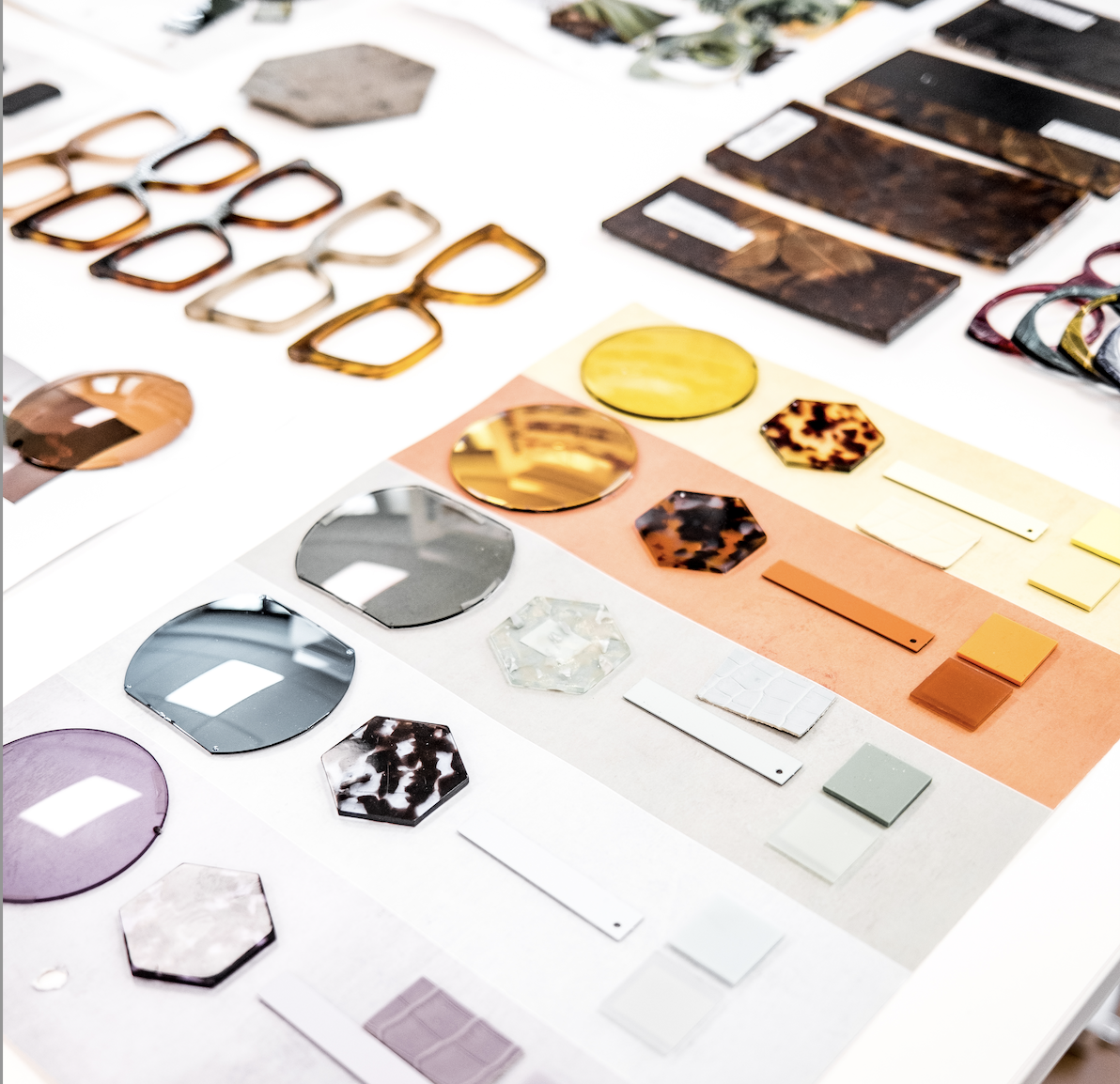What impulses lie behind the birth of a shape and a colour?
Elisa Lovatello, Senior Creative Designer & Cool Hunter at Marcolin, right from the start debunks a cliché. “There’s no such thing as a creative routine for a designer,” Elisa points out. “That’s precisely what makes it the best job in the world,” she continues. The beginning of this adventure winds along a path whose destination is the construction of a story, a solid but emotional one – like the one created through a pair of glasses – that is nourished, and grows, thanks to needs, be they latent or explicit. For a creative person, moving through the world of desires and fulfilling them means intercepting people’s needs through intuition. Research, at this point, is the indispensable scope that allows a creative person to measure themselves against the most important variable in the development of an idea: the historical moment in which people live and move. There are texts that addressed the fresh relevance of such a research method back in the day, which counted factors long neglected by traditional historians as decisive in identifying the totality of a civilisation: as early as the beginning of the 1930s, Johan Huizinga, the famous Dutch historian, claimed attention to dreams, illusions, fears and even colour sensitivities to define the character of an era.
These aspects mark the better-known history of mindsets which, even more so, has to come to terms with the scenarios that condition everyday life
“In the aftermath of the lockdown, we saw a drastic change in people’s needs,” says Elisa. “The quest for wellbeing, both physical and emotional, was an essential element at a time when there was a renewed impetus in the use of technology.” If communicating and going about one’s business from home, taking advantage of agile working options, have proved to be acts of resilience, in the realm of taste and aesthetics they have translated into canons reminiscent of the essence of the Bauhaus movement, officially established in Germany in 1919, which gave voice to rebellion by attributing functionalism to art and crafts.
Ovals and rectangles as solid and soothing emotional reality.

In the post-pandemic context, people’s needs have become equally divided between wellbeing and the functionality of technology, placed at the service of society
“Aesthetically, this trend, defined by people’s need for protection and a quest for stability, at such a delicate time in history, resulted, as it did for the Bauhaus school, in a return to geometric shapes and primary colours.” Traces of these influences, which since the 20th century have continued to intertwine with the style of our time – and for that to come, according to industry experts – are present in the new Marcolin collections and tell of a world of abundant volumes, shapes with enveloping and transparent masks, evoking tension towards a need for protection, represented through very bold, fluorescent colours, such as yellow and orange. And while for certain accessories, like shoes for example, we have seen the return to the catwalk of square heels, the quintessential symbol of stability, on the face certain shapes have proved more functional than others in recreating the same purpose. Ovals and rectangles as the manifestation of a solid and soothing emotional reality, in the exercise of an aesthetic that does not alter but rather enhances the value of the naturalness of a face.